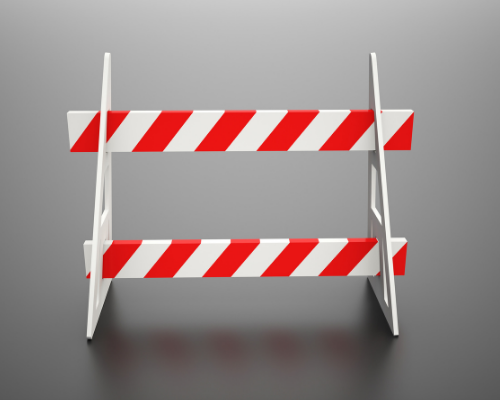Imagine living alone in a prison that you can’t see, taste, or touch, and with no release date in sight. That’s what living with a substance use disorder can feel like. Although it didn’t start that way, here you are, locked into using drugs or alcohol. Maybe you started using a substance to cope with your troubles. At first it gave you comfort. It took the pain away. But that was a temporary solution. Now you’re craving its attention, yearning for its love. You take more and more of it trying to find that escape once again. But an addiction robs you of your physical and mental health. It may appear to be a best friend when it’s really your worst enemy. As the character Morpheus in the movie “The Matrix” said, “It is a prison for your mind.”
A substance can become something you give up everything else for, including your job, relationships, and sometimes even your life. Family and friends may watch you fall farther and farther from reality and hurt yourself again and again. There’s no reasoning with you until something clicks. Finally, you are ready to accept that your life is in chaos and not turning out how you anticipated. You’re willing to get the help you need to get better. You call multiple treatment facilities excited by the possibility of recovery only to get denied admission. What’s going on? Why can’t you get help?
Finding an escape from an active substance use disorder (SUD) can be a challenge even for someone willing to seek treatment. Many of the systems created to protect, help and heal us, have created artificial barriers to addiction treatment. Perspective patients with complex medical and/or psychiatric illness are frequently denied admission for addiction treatment because facilities do not have the necessary staff or training available to safely manage them. Only 10% of patients discharged from emergency departments after an opioid overdose follow up for addiction treatment. Everyone in the grips of an SUD deserves an opportunity to regain control of their lives. If true barriers exist, it is up to us as healthcare leaders to find solutions.

Medical Barriers to Addiction Treatment
More people died in 2020 from drug overdose than ever before in our history. With the increasing rate of IV drug use, hospitals and emergency departments are seeing rising rates of dangerous infections such as endocarditis, an infection of the heart valves. Older patients, as well, find barriers to admission because of chronic medical and/or psychiatric problems such as congestive heart failure, diabetes, and schizophrenia. Approximately 90% of people with SUD use tobacco products or vape, and some have chronic lung disease requiring oxygen therapy. In general, the sicker a person is, the less likely he or she will be admitted to a SUD residential unit.
Insurance Road Blocks
Statistically, most patients seeking treatment services for SUD fall into the low socioeconomic class and finding a facility that will work with them regarding payment can be difficult. Commercial insurances, too, can limit the number of days authorized for the facility which can prompt discharge before the patient is ready. Since readmission rates typically increase with early discharges, the goal is to transition patients when they no longer require a 24-hour supervised level of care. If payment is stopped, the facility can soon find themselves in hot water and typically necessitates discharge.
Criminal Records Can be Barriers
Patients who are involved in the criminal justice system can find it difficult to enter treatment depending on the circumstances of their crime. Violent and sex crimes, especially, can severely limit patients’ options even if the crime took place many years ago. Some facilities have state or county legal ordinances because they are near schools or other public buildings which do not allow people with certain crimes to be admitted.
Governmental Red Tape
Lastly, governmental licensing restrictions (commonly called red tape) are a major barrier to treatment across the country. It was only recently, since the COVID pandemic, that the federal government allowed addiction services to utilize telehealth to deliver addiction treatment, including telepharmacotherapy and telecounseling. New evidence shows telehealth services yield similar rates of long-term retention in addiction treatment as in-person services do, and it’s more cost effective.
Many companies have started to utilize telehealth services to reach patients in rural or underserved communities that they were previously unable to reach. However, some states are beginning to roll back their telehealth initiatives with the end of the pandemic and could reverse all the progress addiction medicine has made.
There are other barriers to addiction treatment, but this should provide a good look at the difficulty some people suffering from substance use disorders experience when trying to get into an addiction treatment center. All of these are artificial, and we can make strides to overcome them. The only ones who end up suffering the consequences are the patients and their families and we need to do better. At Landmark Recovery, we’re removing barriers to treatment and realizing our mission to help free one million people from the prison of addiction.




